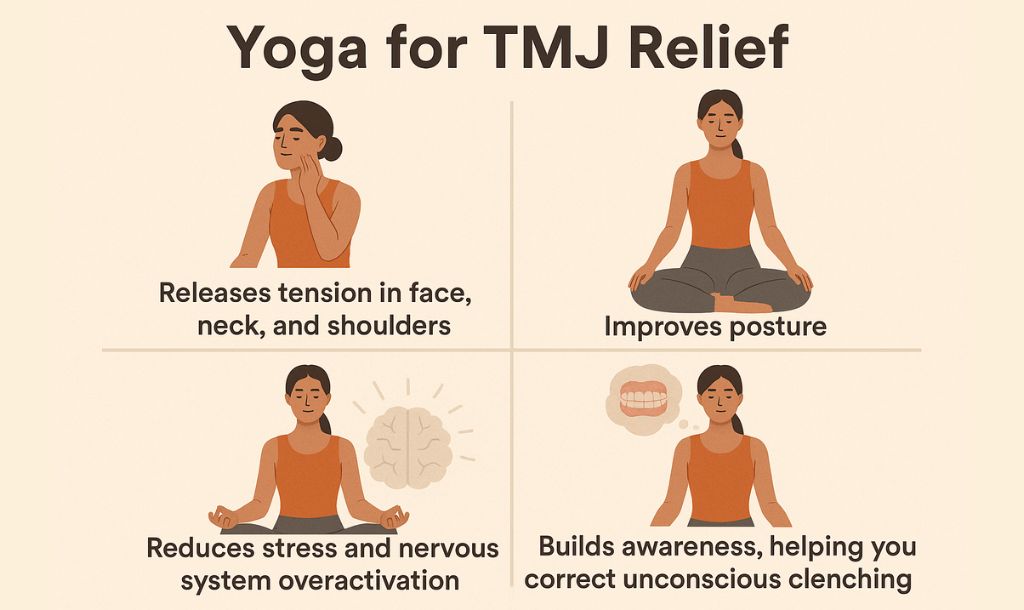What is Setu Bandha Sarvangasana (Bridge Pose)?
.webp)
Setu Bandha Sarvangasana, also known as Bridge Pose, is one of the first few back-bending yoga poses many new yogis begin to master.
In this pose, the head and neck are descending more than the heart with comfortable pressure, allowing you to gain the physical and deep emotional benefits of opening your chest and thoracic spine. It can be done both restoratively or vigorously, as a strengthening or resting pose.
The Bridge pose also lowers the sympathetic "fight-or-flight" nervous system and boosts the parasympathetic nervous system.
Overview and Etymology
The term comes from the Sanskrit words Setu, which means Bridge; Bandha, meaning Caught; Sarva, meaning All; Anga, meaning Limb; and Asana, which means Seat or Posture.
The most famous reference in Hindu Mythology for Bridge is in Ramayana. When Ravana abducted Sita, then Lord Rama, with the help of Ocean God and his monkey army, built the Ram Setu (Bridge Created by Rama) from South India's Rameswaram Islands in Tamil Nadu to Sri Lanka.
Later in the 19th century inside Sritattvanidhi ((a Karnataka language book showing divine figures in South India and written before 1868), this pose was first mentioned as "Kmaphsana."
Sanskrit Name: सेतु बन्ध सर्वाङ्गासन Pronunciation: SAY-too BAHN-duh shar-vahn-GAHS-uh-nuh
Pose Type: Backbend, Chest Opener Also known as: Bridge Pose
Strengthens: Spine, Lower Back, Glutes, and Abdomen
Stretches: Chest, Throat, Neck, Back, and Spine
Health Benefits of Setu Bandha Sarvangasana
- Enhances cardiovascular function.
- Improves core balance and strength.
- Activates the Muladhara, Anahata, and Visuddha Chakra.
- Strengthens quadriceps, hamstrings, glutes, and pelvic muscles.
- Increased blood circulation and aid in weight loss around the core.
- It helps with menstrual mood swings, work stress, and anxiety problems.
- Regular practice of this pose allows for releasing all negative emotions.
- It relieves musculoskeletal stress, calms the mind, and improves nervous system function.
When to Avoid Performing Setu Bandha Sarvangasana?
- Avoid if breathing is difficult in this pose.
- Avoid if you’ve experienced a recent injury/surgery.
- Try to avoid if you have painful ankles, knees, or shoulders.
- Avoid during pregnancy and menstruation if you have severe cramps and back pain.
- Avoid if you have inflammatory osteoporosis, severely herniated disc, or cervical spondylitis.
How to do Setu Bandha Sarvangasana (Bridge Pose)
The Bridge pose is excellent for stretching your chest, neck, spine, and hips. This movement is also ideal for alleviating back pain, strengthening your buttock and hamstring muscles, and aiding digestion.
Here, the complete practice of Setu Bandha Sarvangasana is divided into four parts (warm-up, posture steps, things to keep in mind, and relaxed poses); take a look below to learn more.
Part 1 - Preparatory Poses for Setu Bandha Sarvangasana
Bridge pose is classified as an intermediate level yoga pose, so the warm-up sequence and flow before it will also be intermediate level.
When working on the flow for Sethu Sarvangasana, it's essential to practice asanas that enhance back and shoulder mobility. Here is a list of some warm-up poses:
1. Surya Namaskar (Sun Salutation) - This flowing twelve-step sequence works very well for opening up the shoulders, legs, and back muscles, while gently increasing blood circulation throughout the whole body.
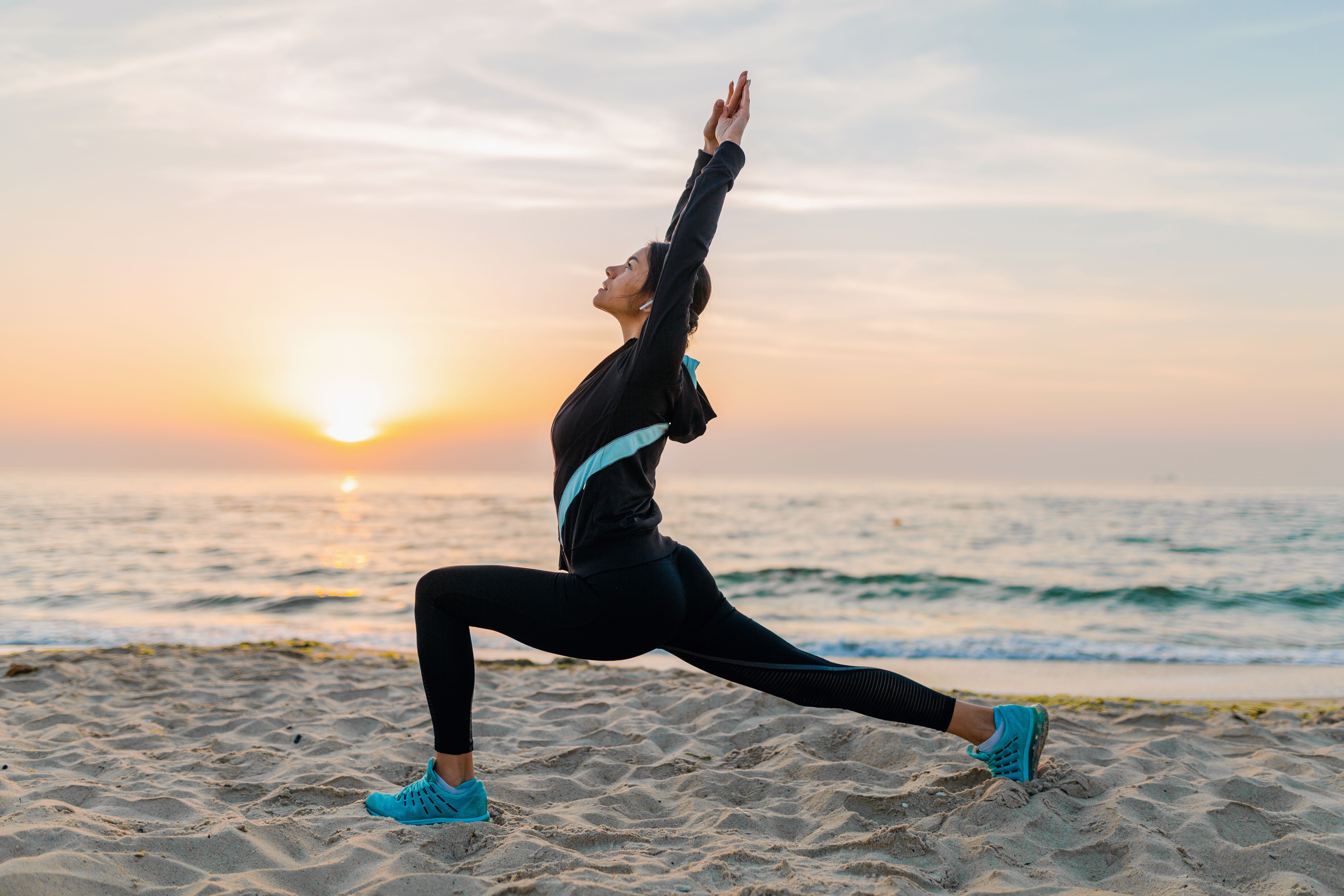
Sun Salutations should be slowly practiced before the Bridge Pose, completing each step of the asana while breathing and holding the pose. If the sequence is not performed with mindfulness, the inner muscles will not awaken or activate properly.
Most of the warm-up yoga poses you need are all combined within this whole sun salutation sequence. These 12 steps work wonders on the body, building enthusiasm and improving respiration. Perform 10-to-12 rounds of sun salutations at a steady pace.
2. Bhujangasana (Cobra Pose) - This fundamental backbend posture in the series of 'backbends' provides much-needed spine and shoulder mobility. Lie on your abdomen, take a deep breath, and spread your legs behind you. Rest your chin and chest on the floor for 1-2 breaths.
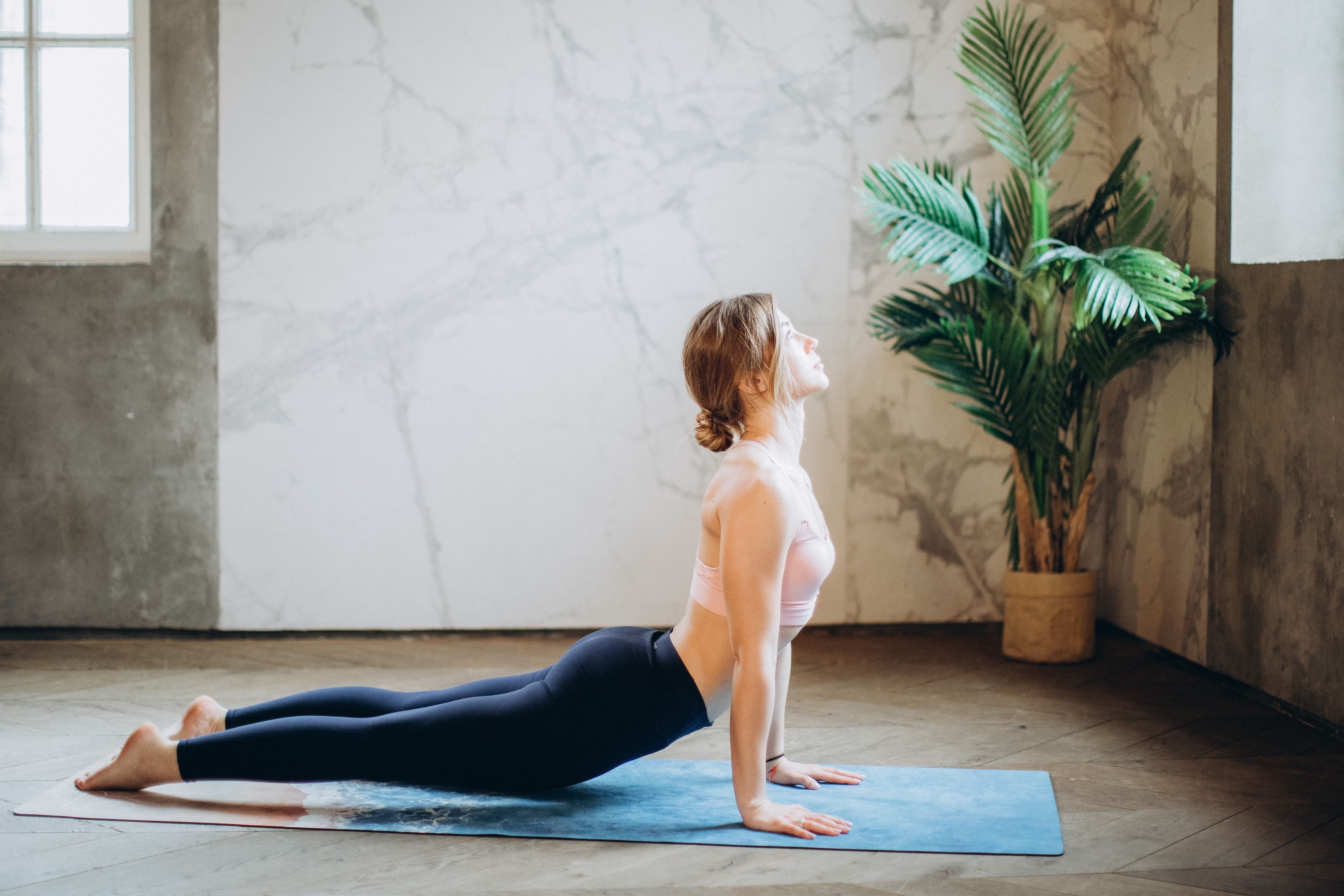
Elevate your whole upper body, starting from the tailbone to the head. Push from the floor by placing both hands on the yoga mat precisely in front of your abdomen.
Push your chest and shoulders back, straightening your arms and elbows by firmly placing your palms on the floor. This pose relaxes your shoulders and lower back muscles and opens them up. Cobra pose improves the movement of the neck by reducing stress in the area, making it stronger for Setu Bandhasana.
3. Matsyasana (Fish Pose) - Lie down on your back with your face towards the ceiling. Place your arms under your hips by bending your elbows. Make sure you’re supporting your lower back. Inhale, raise your upper body towards the ceiling and slowly place the top of your head on the yoga mat.

Your head is bowed backward and touching down on the mat, creating a gap between your lower back and the ground. The pressure used around the lower and upper back while maintaining the pose strengthens your back and facilitates your transition into the bridge pose.
Part 2: Step-by-Step Instructions to Perform Setu Bandha Sarvangasana
Once you feel all flexed and warmed up it’s now time to get into the Setu Bandha Sarvangasana or Bridge Pose:
Step 1- Start by lying on your back and aligning your body in Supta Tadasana or Reclined Mountain Pose.
Step 2- Now bend your knees, place your heels close to your body, with your arms relaxed at your sides.
Step 3- Align your wrists close to your hip flexors, your feet should be flat on the mat. Here, the breath must be consistent and flowing at a normal pace.
Step 4- Inhale and press down through your feet using your leg muscles, glutes, shoulders, and arms at the side as support to lift your hips toward the sky.
Step 5- Hold this position for 3 to 5 deep breaths in and out.
Step 6- Finally, deeply exhale and release the posture by placing your glutes back on the ground.
Inhalation: Inhale deep as you lift your glutes and lower back off the mat.
Exhalation: Exhale deep as you place back your glutes and lower back on the mat.
Performance Duration for Beginners: Hold the bridge pose for 30-60 seconds.
Performance Duration for Advanced: Hold the bridge pose for 3 to 5 minutes.
Part 3: Things to Keep in Mind
It's essential to keep in mind a few posture-related cues so you can avoid unwanted injuries during the practice.
- Raise your spine with ease: While lifting your lower back and glutes upwards, your spine should be raised with ease. Avoid vigorously rushing into this pose, because it can lead to spinal injuries.
- Engage your core: Once your lower back and glutes are all raised upwards, try engaging your core muscles, especially if you find it difficult to hold this pose. The core muscles involve the abdomen, lower back, glutes, quadriceps, and hip flexors. Be mindful and concentrate on tightening these muscle groups for longer holds.
- Do not sink downwards: If you find it's difficult to hold your glutes and lower back upwards, and they are constantly falling, try broadening your shoulders and rolling them back away from your ears. this will help you open your chest with a strong-incline hold. Make a 45-degree angle of inclination while the mid-body is lifted up.
Part 4: Relaxing Poses After Setu Bandha Sarvangasana
After Bridge Pose, it’s important to perform counter yoga asanas to relax the muscles.. The following are some gentle, relaxing postures you can perform after the Bridge Pose:
1. Supta Baddha Konasana (Reclining Bound Angle Pose):
From Setu Bandha Sarvangasana, bend your knees and lie down with both feet in Namaste. Bring your feet up close to your perennial and make sure your back is flat on the ground.
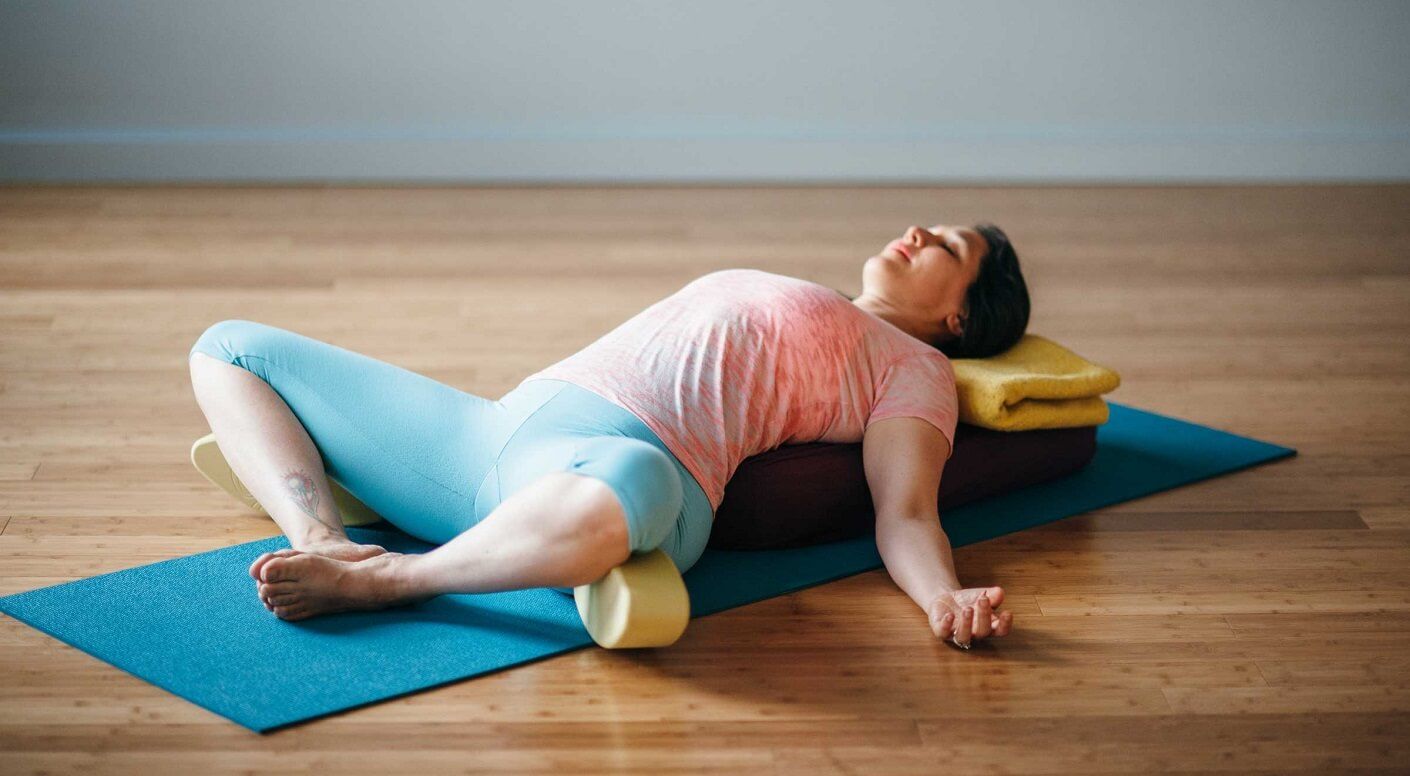
Bridge Pose is practiced with arms extended alongside you, so try to focus on relaxing your spine and shoulders, releasing any strain. Remain in this position for four rounds of deep breathing. After Setu Bandhasana, this pose should feel soothing for your back and shoulders.
2. Apanasana (Knees to Chest Pose): After performing intermediate chest and shoulder-opening poses, you can relax them with a counter-pose like Apanasana.
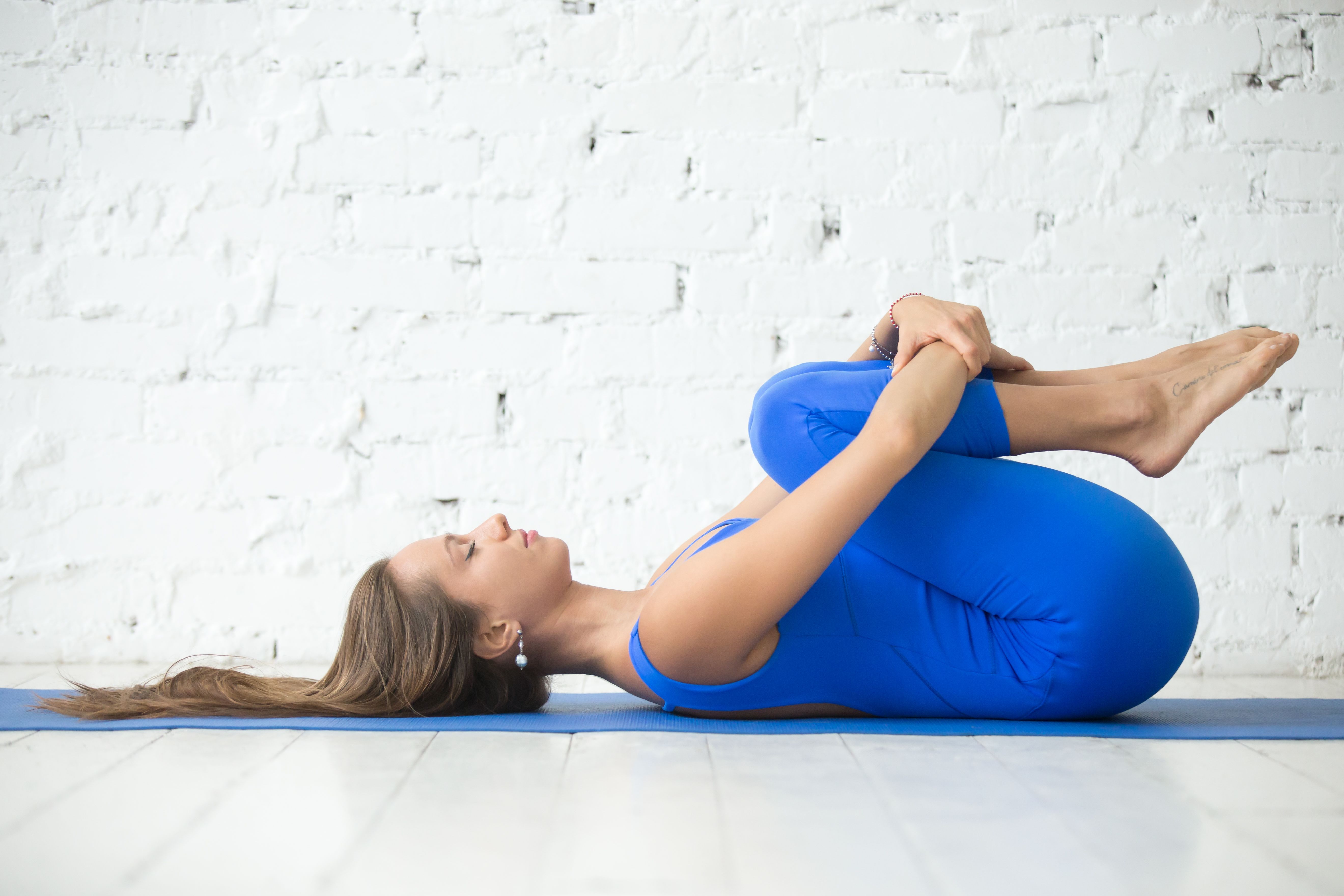
Knees to Chest posture is performed the way it’s described; simply bend both knees and try to reach them to your chest. If you want to relax your lower back, lift your neck and try to touch your knees with your head. Take five to ten deep breaths as you release tension from your tailbone to your upper back muscles.
3. Savasana (Corpse Pose): Savasana is an important pose to finish any yoga session, especially after Bridge pose practice. The entire body is relaxed in this position, with legs stretched out and arms stretched away from the body.

Relax your whole body by loosening the muscles in your back with steady, smooth, easy breathing.
What is Setu Bandha Sarvangasana (Bridge Pose)? Variations to Consider
Bridge Pose comes in a variety of variations that an intermediate to advanced yoga practitioner can perform for added endurance and core strength.
1. Bridge Pose with locked palms: It's just like the regular Setu Bandha Sarvangasana practice, but with the hands clasped and placed right below the lower back.
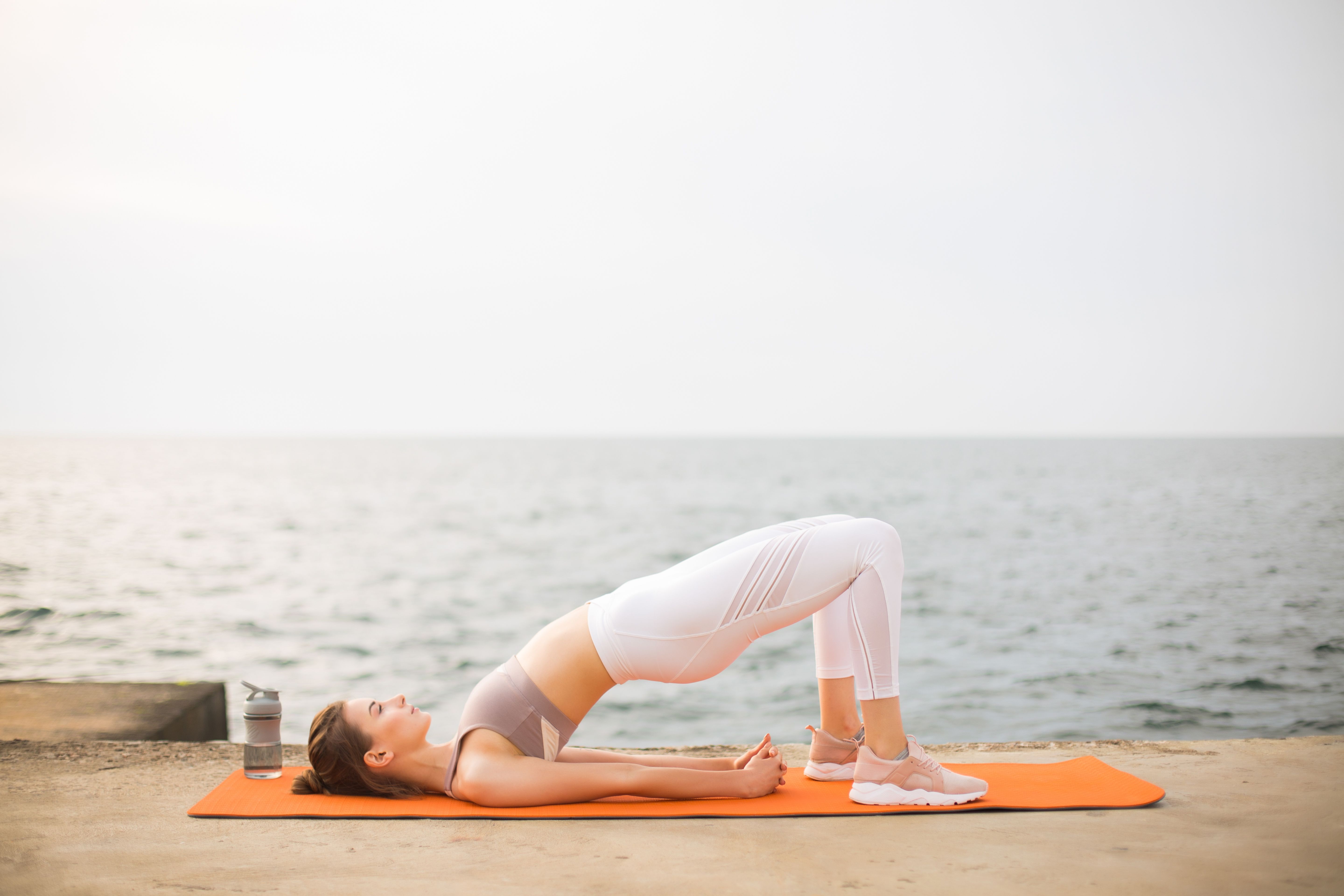
This is an advanced bridge pose hold because the hands are now off the ground, and the pose must be held using only shoulder and core stability.
2. Bridge Pose on the toes: If you’d like to work your legs even further, try lifting both your heels up from the ground and hold the bridge pose on your toes.
Make sure your heels are flexed up, and your whole body weight is on your toes and shoulders. If you can continue to hold this posture for 60 to 90 seconds, you will feel an added burn around your hamstrings and calves, making them even stronger.
3. Bridge Pose with arms overhead: While in simple bridge posture, try stretching out both arms overhead and flexing your upper body further.
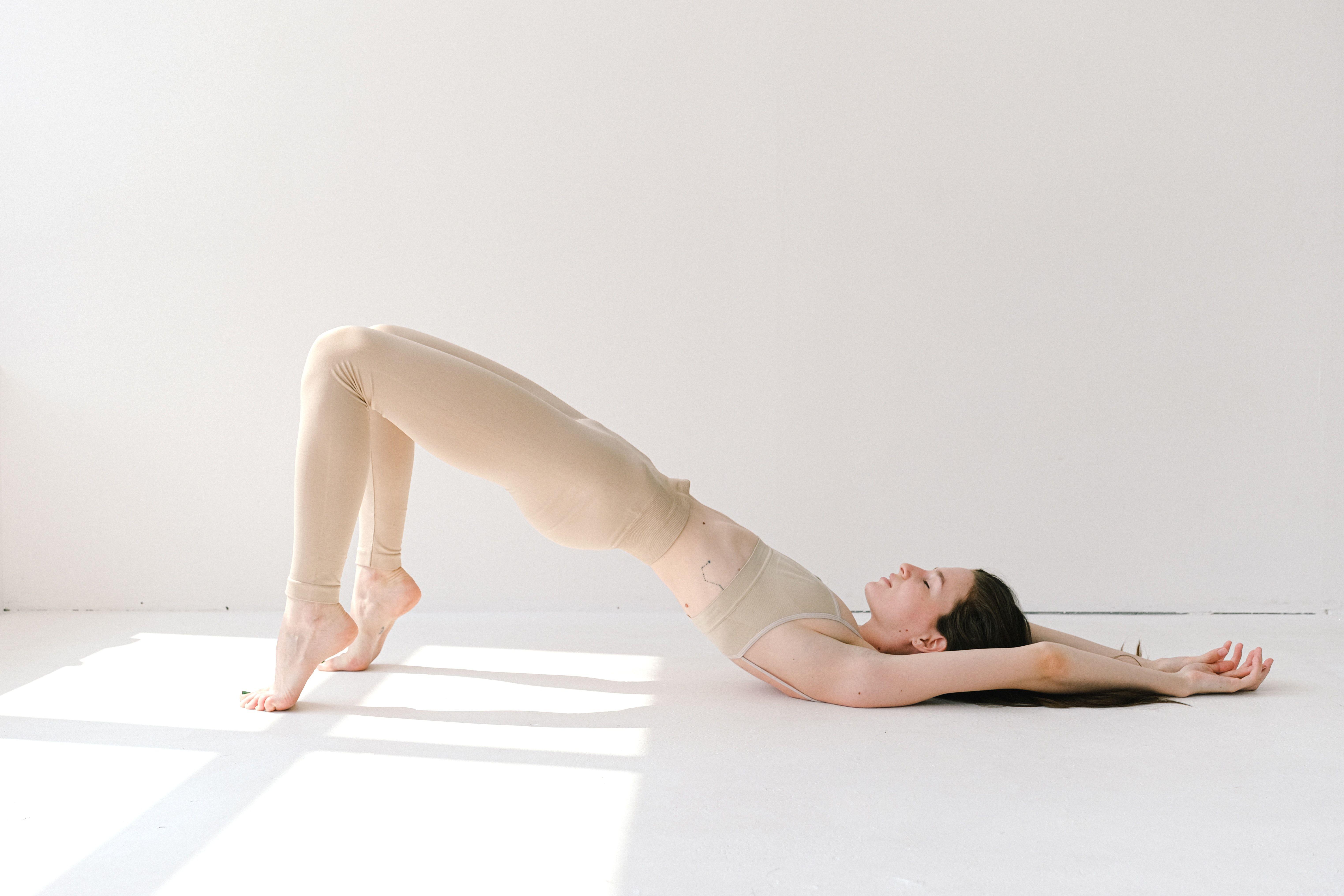
This is a challenging variation if you are not yet stable around the core and hip flexors, so make sure you have the strength to hold the posture without any assistance from your arms.
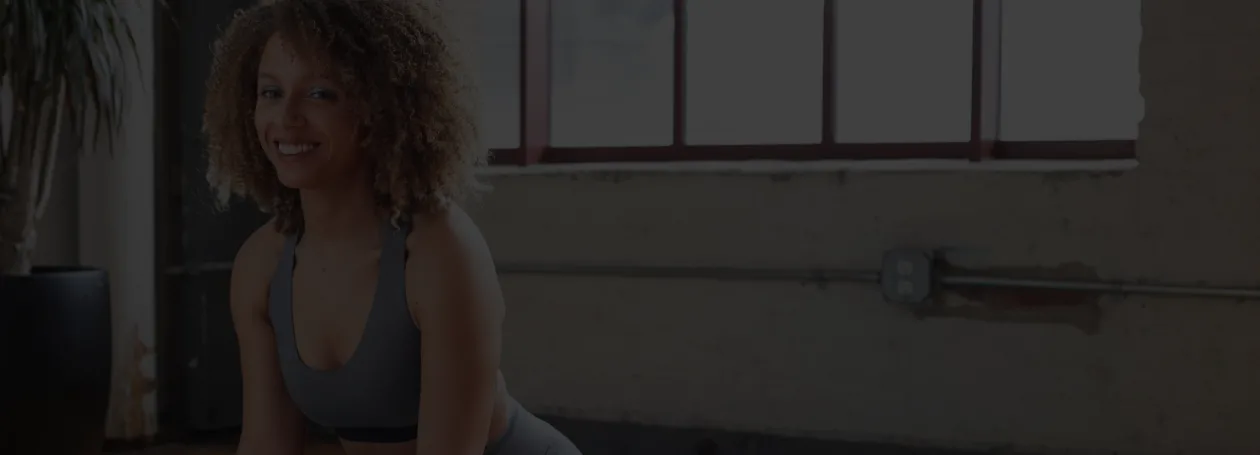
Enjoy a Free 1-on-1 Session with a Coach!
Receive personalized guidance tailored to your unique fitness goals, live with a dedicated coach—no credit card required.
Frequently Asked Questions about Setu Bandha Sarvangasana (Bridge Pose)
These are the steps to practice Setu Bandha Sarvangasana:
- Lie on your back and bend your legs.
- Move your feet close to your butt and place your hands at your sides.
- Inhale deeply and slowly raise your hips up from the ground.
- If you have a strong core, clasp your hands below your back.
- Hold this posture up for a few seconds, then release the pose by deeply exhaling.
Here is a list of benefits of Setu Bandha Sarvangasana:
- Aids in digestion.
- Improves blood circulation.
- Relieves stress and depression.
- Stretches the chest, neck, spine, and hips.
- The back, buttocks, and hamstrings are all strengthened.
- Calms the brain and central nervous system.
- Stimulates lungs, thyroid glands, and abdominal organs.
People with herniated discs or abdomen, weak joints, osteoporosis, cervical spondylitis, and high blood pressure should not perform Setu Bandha Sarvangasana without professional guidance.



%20(7).jpg)
